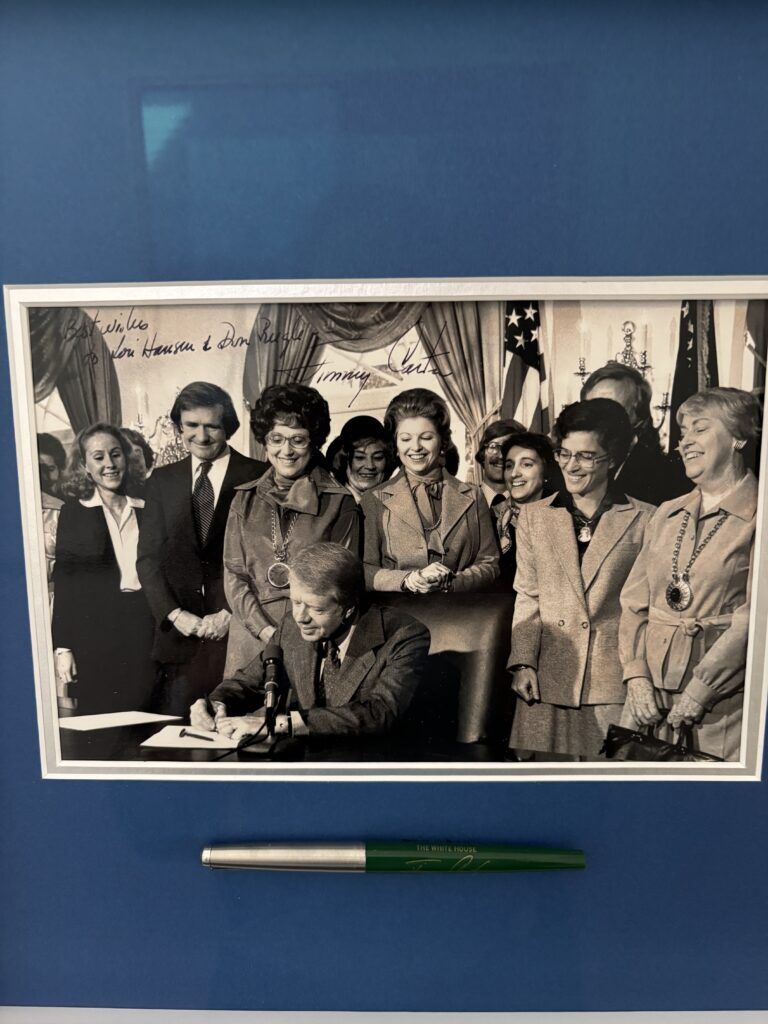The Ongoing Journey for the Equal Rights Amendment: Reflections on Presidential Support and Unseen Contributions
As we celebrate Women’s History Month, it is essential to reflect on the legacy of President Jimmy Carter in establishing this observance and his ardent backing of the Equal Rights Amendment (ERA). Despite significant efforts, the ERA remains unratified, even after its extended deadline in 1982 expired.
The Presidential Proclamation of Women’s History Month
Women were first officially recognized for their contributions to the nation through a proclamation by President Carter in 1980, designating March as a time to honor their historical role, which he deemed “as vital as that of the men whose names we know so well.” He expressed the belief that understanding the full narrative of American history necessitated acknowledging the need for “full equality under the law for all our people.”
Support for the Equal Rights Amendment
Central to his vision for equality was the ratification of the ERA, which articulates, “Equality of Rights under the Law shall not be denied or abridged by the United States or by any state on account of sex.” Initially passed by Congress on March 22, 1972, the amendment was sent to the states for ratification, accompanied by a seven-year deadline for completion.
Recognizing the approaching deadline in 1979—when only 35 of the necessary 38 states had ratified the amendment—Carter extended the timeframe to 1982 through the signing of House Joint Resolution 638. This extension was viewed as a lifeline to the amendment and seen as pivotal to its future.
Key Advocates for ERA Ratification
During the signing of H.J. Res. 638, Carter reiterated the importance of the ERA as a straightforward acknowledgment of women’s equal rights. While he credited many male lawmakers, the contributions of female politicians and advocacy groups were crucial to the movement’s momentum. Notably, Representative Elizabeth Holtzman of New York was among the few women in Congress championing the resolution for a deadline extension.

Among the significant figures present were leaders from women’s organizations such as the American Association of University Women and the League of Women Voters, as well as influential figures like Bella Abzug, who had been appointed by Carter to co-chair the National Advisory Committee for Women.
The Role of Senate Wives
In an often overlooked aspect of this legislative effort, Senate wives played a vital role in advocating for the ratification extension. Lori Hansen Riegle, then newly married to Senator Don Riegle of Michigan, noted that the wives’ group sought to influence their spouses to vote against an amendment that might undermine the ERA’s prospects. Their grassroots lobbying highlighted the deeply personal implications of the amendment.
Working alongside advocacy efforts, these women leveraged personal relationships and conversations to underscore the significance of the ERA to their families and future generations. Their collective initiative, combined with Carter’s direct engagement with lawmakers, demonstrated a multifaceted approach to gaining support for the extension.

The Post-Carter Era and Ongoing Challenges
Despite the initial optimism following the extension, the ERA has yet to secure ratification from the requisite number of states, which remains a poignant issue in contemporary discussions around gender equality. Legislative attempts and support within the political landscape continue to fluctuate, particularly during different presidential administrations.
Notably, a resolution by the American Bar Association in 2024 posited that a deadline for ratification is inconsistent with the Constitution’s Article V. Advocacy groups, including the ERA Coalition, have intensified efforts to urge the federal government to recognize the ERA’s standing as part of the Constitution, especially after Virginia ratified it in 2020, becoming the 38th state to sign on.
Looking Ahead
As conversations surrounding women’s rights evolve spatially and politically, the historical narrative concerning the ERA’s passage remains a testament to grassroots efforts and the collaboration between different societal sectors. While there are challenges ahead, the commitment to achieving legal and social equality for women remains strong.
Ultimately, the combined efforts of President Carter, countless advocates, and those often unsung voices like the Senate wives reveal a broader story of perseverance—a story that continues to unfold in the pursuit of full equality under the law.
